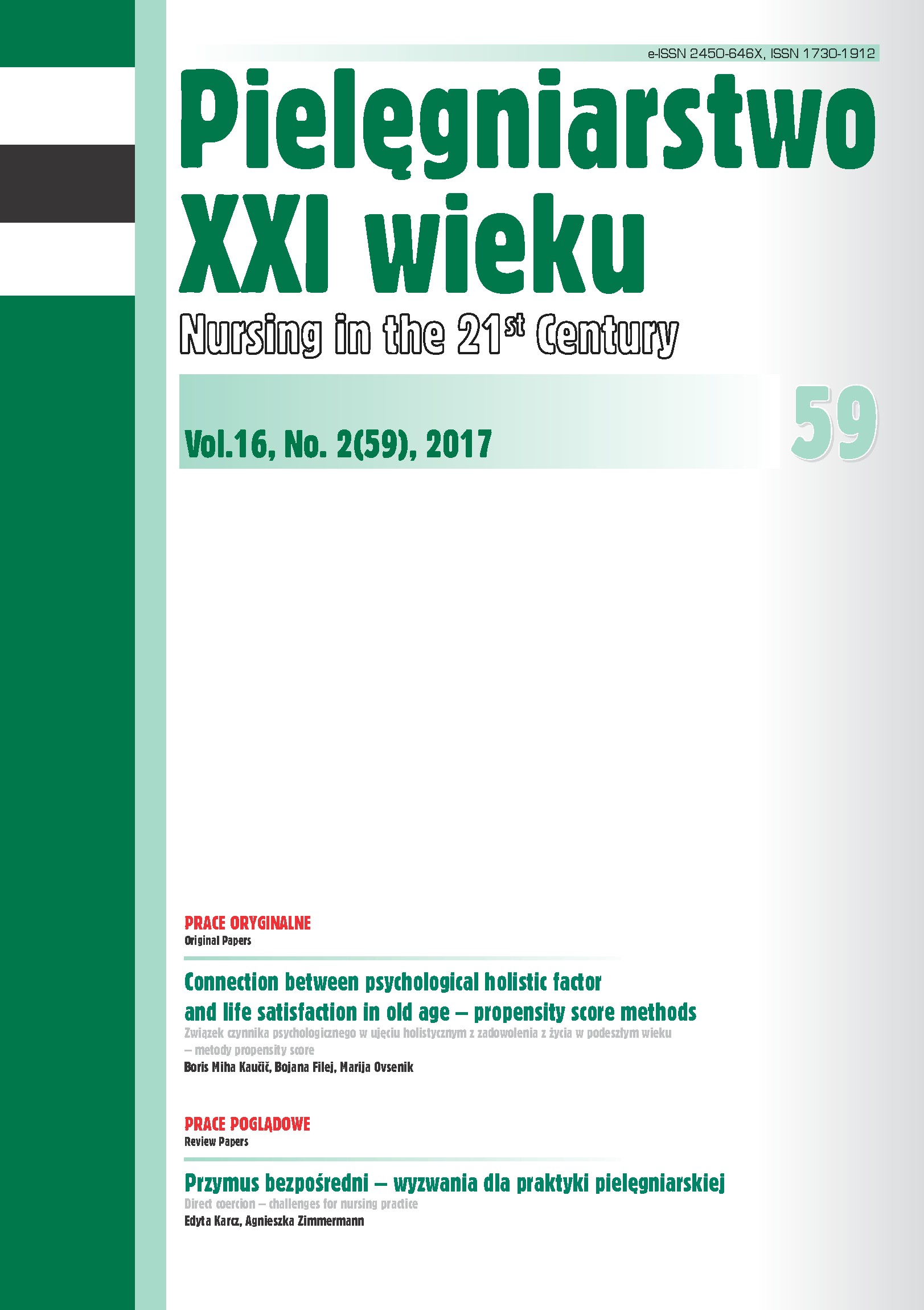Sense of coherence among patients with rheumatoid arthritis
DOI:
https://doi.org/10.1515/pielxxiw-2017-0011Keywords:
sense of coherence (SOC), rheumatoid arthritisAbstract
SENSE OF COHERENCE AMONG PATIENTS WITH RHEUMATOID ARTHRITIS
Introduction. Sense of coherence (SOC-29) clarifies the relationship with health. High SOC in patients with rheumatoid arthritis puts faith in the meaning of life. Makes you want to be healthy and be able to function.
Aim. Aim of this study was to evaluate the sense of coherence in patients with rheumatoid arthritis.
Material and methods. The study was conducted in 2014, consisting of 120 patients with clinically diagnosed RA, who were covered by a stationary health care in a rheumatology department in one of hospitals in Olsztyn. Respondents knowingly gave oral consent to participate in the study. During the study, were used a questionnaire (SOC-29). The tool contains 29 questions relating to various aspects of life.
Results. The mean of coherence in the study group was 137 points. Among the constituent components of SOC, patients received the highest score in the category of a sense of manageability, 48.97 points, followed by a sense of rationality 45.73 points, and a sense of meaningfulness of 42.3 points.
Conclusions. The overall rate of SOC in the group of patients with rheumatoid arthritis reached the level of 137 points and is located in the middle of normative earned by Antonovsky. The highest rate of SOC patients were characterized by an under 30 years of age, also had the highest sense of manageability and reasonableness. However, a higher level of sense of rationality characterized patients between 31 and 40 years.
References
1. Głuszko P, Filipowicz-Sosnowska A, Tłustochowicz W. Reumatoidalne zapalenie stawów. Reumatologia. 2012; 50(2): 83-90.
2. Filipowicz-Sosnowska A, Stanisławska-Biernat B, Zubrzycka-Sienkiewicz A. Reumatoidalne zapalenie stawów. Reumatologia. 2004; 42 (1): 5-15.
3. Zimmermann-Górska I. Choroby reumatyczne. Warszawa: Wydawnictwo lekarskie PZWL; 2000, s. 54.
4. Antonovsky A. Rozwikłanie tajemnicy zdrowia. Warszawa: Instytut Psychiatrii i Neurologii. 2005, s. 34-35.
5. Wlazło A, Kleszczyński J, Dolińska-Żygmunt G, Leszek J. Wybrane zmienne psychologiczne u pacjentów z reumatoidalnym zapaleniem stawów i chorobą Gravesa-Basedowa. Neuropsychiatria i Neuropsychologia. 2008;3 (2): 71-79.
6. Gruszczyńska E, Worsztynowicz A. Koncepcja salutogenezy i poczucia koherencji A. Antonovsky’ego. Promocja zdrowia, Nauki Społeczne i Medycyna. 1999;17: 93-105.
7. Wrześniewski K, Łuszczyńska-Cieślak A, Włodarczyk D. Poczucie koherencji i zmiany emocjonalne u chorych poddanych rehabilitacji po zawale. Zdrowie-Stres-Zasoby. Poznań: Wydawnictwo Fundacji Humaniora; 2001, s.67-102.
8. Adams RJ, Daly A, Dal Grande E, Gill T. Psychological factorsand quality of life in arthritis: a population-based study. Clinical Rheumatology. 2007; 26 (5) 56-59.
9. Nowicka-Sauer K. Aspekty psychologiczne w Reumatologii. Psychologia w Medycynie - wybrane zagadnienia. Gdańsk: AMG; 2006; s.123-135.
Published
Issue
Section
License
Copyright (c) 2017 Authors

This work is licensed under a Creative Commons Attribution-NonCommercial-NoDerivatives 3.0 Unported License.




